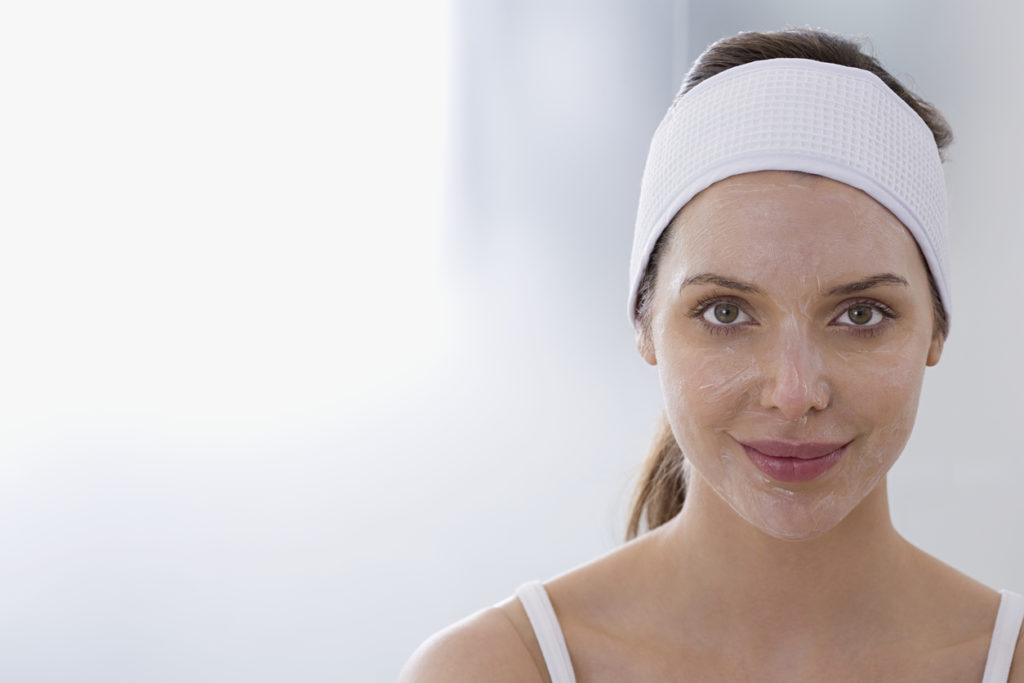In partnership with SA’s top medical aesthetic companies
When considering advanced treatment for your skin “bugbears”, whether it be wrinkles, pigmentation, dull skin, acne, acne scarring, or even stretch marks, chances are your skin-care therapist will recommend chemical skin peels at some point.
Skin peels are an effective, affordable and safe way to achieve facial rejuvenation results, and they complement other treatments beautifully.
Based on your needs and concerns, a professional will determine which type of peel is needed (regarding both the chemical used and depth of skin penetration). Depending on the choice of chemicals, there will be different benefits, and the deeper the peel, the longer the change in the skin will last.
Different peeling agents may also be used together to treat different concerns, which makes choosing qualified therapists with the right kind of technical expertise vitally important. They will determine the right treatment after discussing your medical history, skin sensitivities and peel expectations with you.
Skin-care therapists are qualified to perform superficial to medium peels that don’t penetrate beyond the outermost layer of the skin, while deep peels are the preserve of physicians.
Superficial peels
Also known as “lunch-time” or every-day peels, these remove only the outermost layer of skin (the stratum corneum), and have no downtime with redness or oozing. There is no “peeling” or “shedding” of the skin other than possible mild flaking or dryness after a couple of days, which is easily treated with a good moisturiser.
While superficial peels thin out the stratum corneum, they actually plump up the living layers of the skin, helping to decrease fine lines and wrinkles, “even out” skin tone and pigmentation, as well as controlling oily skin and reducing breakouts.
The therapist will choose between an array of acids at different concentrations (for example, 15%, 20% and 30%), depending on the treatment needed and desired result:
- Alpha-hydroxy acid peels use glycolic acid (derived from sugar cane) and are one of the mildest peels.Used for: general resurfacing, improved complexion and treating fine lines.
- Lactic acid is another alpha-hydroxy acid, derived from milk, and is a powerful chemical exfoliator. Used for: treating fine lines and wrinkles.
- Beta-hydoxy peels use salicylic acid (similar to aspirin). Used for: acne treatment, mild hyperpigmentation and premature skin ageing.
- Retinol peels use retinoic acid, a form of vitamin A, which helps regulate cell growth. It is a slightly deeper peel, but has the added benefit of boosting new tissue growth. It is often used in conjunction with beta-hydroxy peels. Used for: acne, scar and wrinkle reduction, certain hyperpigmentation and to stimulate general skin repair.
Caution: Alpha- and Beta-Hydroxy peels cause mild tingling.
Who can use these?
They are suitable for all skin types, including sensitive skin.
Treatment regime
A course of four to six peels, spaced four weeks apart, is recommended to see a clinical result or outcome.
Options available: NeoStrata ProSystem free-glycolic Peels, Lamelle Alpha, Beta and Lactic Acid Peels, Lamelle Retistore Peel (retinol).
Combination peels use two or more acids in combination, in order to make the peel more versatile, such as Obagi Radiance peel or Skin Ceuticals Pigment Balancing Peel which use a combination of resurfacing acids and brightening agents.
Skin Ceuticals is also known for introducing the Dermaplaning technique to facilitate making a superficial peel penetrate slightly deeper and yielding the results of a slightly deeper peel, without applying more aggressive acids. This technique can be combined with any superficial chemical peel.
Medium to deep peels
A deeper peel is required if you have sun damage, deep dermal pigmentation, acne scarring and wrinkles. The treatment of choice here is a medical peel using trichloracetic acid (TCA) in either 10% or 15% concentration.
It removes the epidermis up to the upper dermis, so it may only be applied by a doctor, and it results in a significant transformation. There is however some downtime as you will experience redness and visible peeling and shedding. These effects and aftercare will be discussed with you.
You will need a pre-treatment consultation with your skin care professional to determine what skin preparation is required before the peel in order to avoid any unwanted side effects such as PIH (Post Inflammatory Hyperpigmentation).
Who can use this? Suitability is assessed on a personal basis, but TCA peels are generally not considered suitable for darker complexions and people prone to sensitivity, atopic skin, rosacea and keloid scarring.
Treatment regime: Depending on the severity of the skin condition, anything from one to six treatments may be required, which may be repeated after six to eight weeks.
Options available: Obagi Medical Blue Peel, SkinTech Easy TCA Pain Control, Lamelle Yellow Peel.
Contact your closest Skin Renewal branch 0861 SKIN SA (7546 72) to book a consultation with one of our doctors who can advise you on which peels would be best for your situation.
Take the quick Beyond Beauty Survey and you could win a R2000 Skin Renewal voucher to spend in our online store, with free delivery within South Africa. T&Cs apply.
